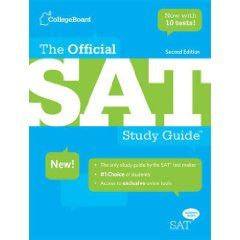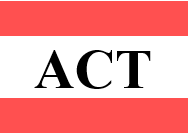Are you trying to decide between the SAT and ACT? One of the most crucial factors in making this choice is understanding how the reading sections differ. The reading comprehension portions of these standardized tests can make or break your overall score, so it’s essential to know which format aligns better with your strengths.
In this comprehensive guide, we’ll break down the key differences and similarities between SAT and ACT reading sections, plus share proven preparation strategies to help you excel on whichever test you choose.
Understanding the Basic Structure
SAT Reading Section Overview
The Digital SAT has undergone significant changes in 2024. The reading section is now combined with writing into one “Reading and Writing” section that contributes to your total score out of 1600 points. This section features shorter passages with focused questions, making it more manageable than the previous format.
ACT Reading Section Overview
The ACT maintains its traditional structure with a dedicated 35-minute reading section containing 40 questions across four passages. This section remains separate from the English section and contributes to your composite score out of 36 points.
Key Differences Between SAT and ACT Reading
1. Timing and Pacing
One of the most significant differences lies in timing pressure:
- SAT Reading: More generous with time allocation, allowing approximately 75 seconds per question
- ACT Reading: ACT Reading has 40 questions in 35 minutes, which gives you just 52 seconds per question
The ACT requires you to be a faster and more efficient reader whereas the SAT requires you to be able to break down less intuitive passages and focus on evidence based arguments within rhetoric.
2. Passage Length and Complexity
- SAT: Features shorter, more focused passages with targeted questions
- ACT: Expect lengthier ACT reading passages that require sustained attention and rapid comprehension
3. Question Types and Focus
The two tests emphasize different reading skills:
- SAT: Emphasizes evidence-based reasoning and close textual analysis
- ACT: Focuses more on straightforward comprehension and main idea identification
4. Graphics and Visual Elements
ACT – no graphic-based questions in the reading section, but an entire graphic-based science section. The SAT includes some graphic-based questions in its reading section, though they’re limited.
Similarities Between SAT and ACT Reading
Despite their differences, both tests share several common elements:
Passage Types
Both tests include similar passage categories:
- Literature and fiction
- Social studies and history
- Natural sciences
- Arts and humanities
Multiple Choice Format
Both use exclusively multiple-choice questions with four answer options.
Reading Skills Tested
Both assess:
- Main idea identification
- Detail comprehension
- Inference making
- Vocabulary in context
- Author’s tone and purpose
Which Test Should You Choose?
Choose the SAT if you:
- Prefer more time to analyze passages carefully
- Excel at evidence-based reasoning
- Like shorter, more focused reading segments
- Struggle with time pressure
Choose the ACT if you:
- Read quickly and efficiently
- Prefer straightforward comprehension questions
- Can maintain focus through longer passages
- Work well under tight time constraints
Top Preparation Strategies for Both Tests
Universal Reading Strategies
1. Build Your Foundation
The reading section of either the ACT or the SAT is the most challenging one to improve because it relies on solid foundational language arts skills that you’ve been building. Start your preparation early to strengthen these core skills.
2. Practice Regularly and Strategically
Practice by itself isn’t enough, though—it’s crucial that you try to learn from each section you complete. Build time into your practice for you to review both your mistakes and your timing.
3. Use the Process of Elimination
The Process of Elimination isn’t just a suggestion; it’s a lifeline. Students should start by clearly identifying the wrong answers to improve their chances of choosing the right one.
4. Focus on Main Ideas
Don’t get lost in the details. The goal is to find the main idea of the passage.
SAT-Specific Strategies
Read Actively for Evidence
Since the SAT emphasizes evidence-based reasoning, practice identifying specific textual support for your answers. Look for direct quotes and clear references that justify your choice.
Utilize the Adaptive Format
The Digital SAT adapts to your performance, so focus on accuracy in the first module to unlock higher-difficulty questions that can boost your score.
Master Shorter Passages
Practice with the new shorter passage format to maximize efficiency and accuracy within the updated structure.
ACT-Specific Strategies
Develop Speed Reading Skills
With only 52 seconds per question, efficient reading is crucial. Practice skimming for main ideas and key details without getting bogged down in every word.
Use Strategic Reading Approaches
Some say you should always read the passage in its entirety, while others recommend reading the questions first and then selectively from the passage to save time. The truth is, there isn’t necessarily one strategy that works for every student. Experiment to find your optimal approach.
Time Management is Critical
Practice strict timing during preparation. Aim to spend no more than 8-9 minutes per passage, including reading time and answering questions.
Making Your Final Decision
The ELA sections on the two tests have quite different approaches to the question structure, but they test students on similar fundamental skills. The best way to decide is to take practice sections of both tests and see which format feels more natural to you.
Consider these factors:
- Your natural reading speed
- Comfort with time pressure
- Preference for passage length
- Strength in analytical vs. comprehension questions
Conclusion
Both the SAT and ACT reading sections present unique challenges and opportunities. The key to success lies in understanding these differences, identifying which format suits your strengths, and following a structured preparation plan.
Remember, while test-taking strategies are valuable, consistent and early preparation is what truly drives score improvement. Whether you choose the SAT or ACT, regular practice with targeted strategies will help you achieve your best possible score.
Start your preparation today by taking diagnostic tests for both formats. For a more comprehensive approach, consider taking a combined assessment that evaluates your performance on both tests simultaneously. Socrato offers an innovative SAT vs. ACT comparison test that provides detailed performance analysis and personalized test recommendations based on your individual strengths and testing style.
The reading section doesn’t have to be intimidating – with the right approach, adequate preparation, and proper test selection guidance, you can tackle either exam with confidence and achieve your college admission goals.










